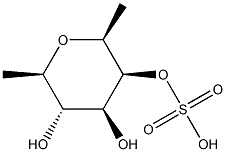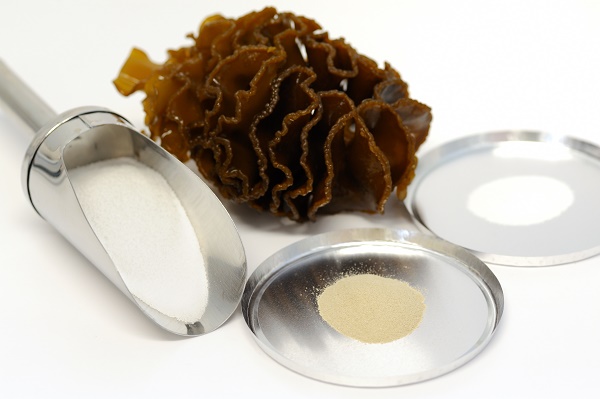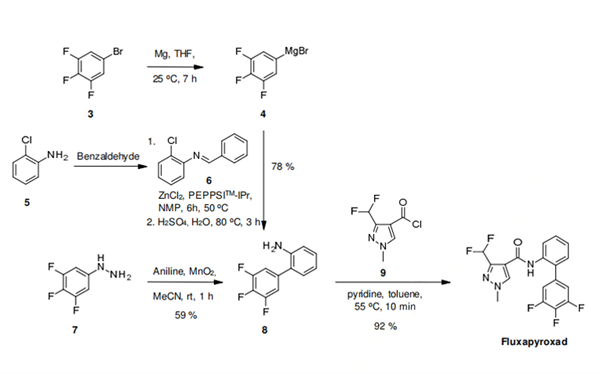Fucoidan Structure and Activity in Relation to Anti-Cancer Mechanisms
General Description
Fucoidan, a complex molecule found in brown algae, has shown potential as a preventive and anti-cancer agent. It interacts with specific transmembrane receptors such as TGF-β, VEGF, and ER to exert its effects by targeting various cellular mechanisms. Fucoidan inhibits the PI3K/AKT and MAPK pathways, reduces cell proliferation and migration, and induces apoptosis through the caspase pathway. Fucoidan's bioactivity is dependent on its sulfate groups and structure, which varies among different species of brown algae. Additionally, fucoidan's ability to enhance the efficacy of chemotherapy drugs makes it a promising candidate for combination therapy. However, further research is needed to fully understand the mechanisms involved and identify optimal dosages for clinical use.
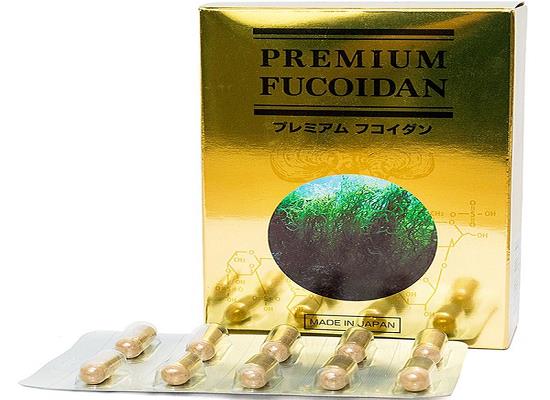
Figure 1. Capsules of fucoidan
Structure
Fucoidan is a complex molecule that is found in various species of brown algae. The structure of fucoidan is highly dependent on the specific algae species and always contains sulfated fucans as its backbone. The sulfated fucans backbone may contain branching consisting of different sugars such as fucose or uronic acid, making it difficult to study the molecule as a whole. Therefore, many studies focus on highly purified fractions of fucoidan, limiting our understanding of the bioactivity of the whole molecule. Two types of fucoidan molecules can be distinguished based on their backbone structure, which is either (1 → 3)-linked α-L-fucopyranose residues or alternating (1 → 3)-linked α-L-fucopyranose and (1 → 4)-linked α-L-fucopyranose residues. Fucoidans extracted from Fucus vesiculosus are relatively simple and contain mainly fucose and sulfate branching. The presence of neutral sugars in fucoidans from other species makes structural analysis more complex. The structures of fucoidan from different species of brown algae resulted in an improved categorization of the structures, although it remains challenging to identify the structure of fucoidan based on the order they belong to. 1
Cellular Mechanisms of Anti-Cancer Activity
Fucoidan has been found to interact with the PI3K/AKT signaling pathway, targeting it via multiple regulators. Inhibition of this pathway leads to reduced cell proliferation and migration of cancer cells. While PTEN is a common tumor suppressor and a target for fucoidan-mediated inhibition of the PI3K/AKT signaling pathway, its mutation in cancer cells raises questions about fucoidan's ability to stimulate it. Fucoidan has also been linked to the inhibitory effect on the MAPK pathway, which is associated with growth, proliferation, and metastasis. The reduction of ERK1/2 protein levels by fucoidan has been found to be associated with other cellular pathways. The role of p38 MAPK is more modest compared to ERK1/2 and AKT, while the caspase pathway has been mentioned several times in fucoidan-mediated apoptosis. The interaction between death receptors and fucoidan could be another significant mechanism of fucoidan-mediated apoptosis. It is not yet known if fucoidan can directly interact with the Bcl-2 side of the caspase pathway due to its regulation by the PI3K/AKT pathway. Overall, fucoidan has shown potential as a preventive agent against skin cancer and a promising anti-cancer agent targeting multiple cellular mechanisms. 2
Receptors of Anti-Cancer Activity
Fucoidan, a large polysaccharide, interacts with specific transmembrane receptors to exert its anti-cancer effects. The most relevant receptors for fucoidan activity include TGF-β, VEGF, and ER. Transforming growth factor-beta (TGF-β) is involved in tumorigenesis and is often upregulated in metastatic cancer cells. Fucoidan has been found to stimulate Smurf2, leading to the accelerated degradation of TGF-β receptors. Additionally, the inhibition of TGF-β and BMP signaling in cancer cells, along with their activation in healthy cells, suggests that fucoidan can be used as an additional therapy to improve treatment efficacy and reduce side effects. Fucoidan has also been shown to inhibit VEGF expression in various cancer cell lines. This inhibition is significant for fucoidan's potential as VEGF signaling is closely linked to the FAK and PI3K/AKT pathways. Sulfate groups present in fucoidan are important for its bioactivity, and modifying fucoidan molecules to increase sulfate groups has garnered interest. Another interesting aspect is fucoidan's supposed inhibitory effect on estrogen synthesis and activation of the estrogen receptor (ER). Blocking the estrogen pathway has been a key approach in cancer treatment, and fucoidan's minimal effects on healthy cells and ability to inhibit estrogen binding make it a potential drug for estrogen-dependent cancers. However, more research is needed to fully understand the mechanisms involved. Furthermore, fucoidan has shown synergistic effects when combined with other chemotherapy drugs, increasing the expression of pro-apoptotic biomarkers and enhancing the efficacy of some chemotherapeutics. However, due to limited studies on this topic, further investigation is required to fully assess the importance of this characteristic of fucoidan. In conclusion, fucoidan's anti-cancer activity is mediated through its interactions with specific receptors such as TGF-β, VEGF, and ER. 3
Reference
1. van Weelden G, Bobiński M, Okła K, van Weelden WJ, Romano A, Pijnenborg JMA. Fucoidan Structure and Activity in Relation to Anti-Cancer Mechanisms. Mar Drugs. 2019, 17(1): 32.
2. Moon HJ, Park KS, Ku MJ, Lee MS, Jeong SH, Imbs TI, Zvyagintseva TN, Ermakova SP, Lee YH. Effect of Costaria costata fucoidan on expression of matrix metalloproteinase-1 promoter, mRNA, and protein. J Nat Prod. 2009, 72(10): 1731-1734.
3. Buzdar AU. Fulvestrant—A new type of estrogen receptor antagonist for the treatment of advanced breast cancer. Drugs Today. 2004, 40: 751–764.
Related articles And Qustion
See also
Lastest Price from Fucoidan manufacturers
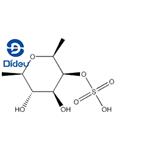
US $0.00/kg2025-11-04
- CAS:
- 9072-19-9
- Min. Order:
- 1kg
- Purity:
- 99%
- Supply Ability:
- 10000KGS

US $0.00-0.00/KG2025-08-26
- CAS:
- 9072-19-9
- Min. Order:
- 1KG
- Purity:
- 99%
- Supply Ability:
- 500kgs/month
